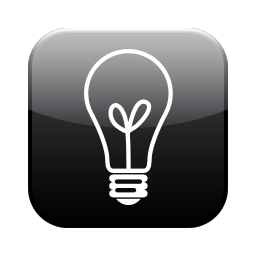Strategies to Save Electricity
In an age where electricity costs are constantly under scrutiny and environmental sustainability is a growing priority, actively managing and reducing energy consumption has become a critical objective for both households and businesses. Saving electricity isn’t just about cutting down on utility bills; it’s about minimizing environmental impact, enhancing operational efficiency, and building a more resilient future. Whether you’re a homeowner looking to trim monthly expenses or a large enterprise aiming for sustainability and cost control, strategic energy consumption reduction offers tangible and lasting benefits.
This comprehensive guide explores effective strategies and practical tips to significantly lower your electricity usage, demonstrating that saving power is achievable through a combination of smart habits, technological upgrades, and informed decision-making.
The Imperative of Reducing Electricity Consumption
The drive to reduce electricity consumption is fueled by several compelling factors:
- Financial Savings: Directly translates to lower utility bills, freeing up funds for other investments or personal savings. For businesses, this can significantly improve profit margins.
- Environmental Impact: Less electricity consumption often means reduced reliance on fossil fuel-based power generation, leading to a smaller carbon footprint and a cleaner environment.
- Resource Conservation: Conserves natural resources used in electricity generation and transmission.
- Enhanced Reliability: A more efficient system with lower demand can reduce strain on the electrical grid, potentially leading to fewer outages and greater stability.
- Increased Property Value: Energy-efficient homes and businesses are increasingly attractive to buyers and tenants, often commanding higher market values.
Strategies for Residential Electricity Saving
For homeowners, reducing electricity consumption starts with awareness and adopting smarter habits:
- Optimize Heating and Cooling (HVAC):
- Thermostat Management: Set your thermostat strategically. In summer, aim for 24°C or higher; in winter, between 18°C and 20°C. Each degree outside these ranges can significantly increase energy use.
- Smart Thermostats: Install a programmable or smart thermostat that learns your habits, adjusts temperatures automatically, and can be controlled remotely. This prevents wasted energy when no one is home.
- Insulation and Sealing: Ensure your home has adequate insulation in walls, ceilings, and floors. Seal drafts around windows, doors, and electrical outlets with weather stripping and caulk to prevent air leaks, keeping conditioned air inside.
- HVAC Maintenance: Regularly service your heating and cooling systems. Clean or replace air filters monthly. A well-maintained system runs more efficiently.
- Efficient Lighting:
- Switch to LEDs: Replace all incandescent and even compact fluorescent (CFL) bulbs with LED lighting. LEDs use up to 75-85% less energy and last much longer.
- Maximize Natural Light: Utilize daylight by opening curtains and blinds. Arrange furniture to avoid blocking windows.
- Turn Off Lights: Develop the habit of turning off lights when leaving a room. Consider motion sensors for infrequently used areas like bathrooms, hallways, or outdoor lighting.
- Zoned Lighting: Use lamps or spotlights for specific tasks rather than illuminating entire rooms when only a small area needs light.
- Appliance and Electronics Management:
- Unplug «Vampire Power»: Many electronics (TVs, chargers, game consoles, computers) consume standby power even when turned off. Unplug them or use power strips with on/off switches to cut power completely.
- Energy-Efficient Appliances: When purchasing new appliances, always check their Energy Star rating (or equivalent energy efficiency label). Higher star ratings indicate greater efficiency and lower running costs.
- Full Loads: Only run washing machines and dishwashers when they are full. Use cold water for laundry whenever possible.
- Refrigerator Efficiency: Set your fridge to 4-5°C and freezer to -15 to -18°C. Ensure door seals are tight and the coils are clean for optimal performance. Place fridges away from heat sources.
- Cooking Smart: Use microwaves or smaller appliances for reheating. Keep lids on pots when cooking on the stovetop to reduce energy loss.
- Water Heating Efficiency:
- Lower Temperature: Set your hot water thermostat to around 50°C.
- Shorter Showers: Install low-flow showerheads and aim for shorter showers to reduce hot water consumption.
- Insulate Pipes: Insulate hot water pipes to minimize heat loss.
Strategies for Businesses to Maximize Electricity Savings
Businesses, with their larger scale of operations, have even greater opportunities for significant energy consumption reduction:
- Conduct Comprehensive Energy Audits:
- Identify Waste: A professional energy audit is the foundational step. It involves a detailed analysis of your facility’s energy consumption patterns, identifying major energy users, inefficiencies, and areas of waste.
- Actionable Recommendations: Auditors provide tailored recommendations, categorizing opportunities by cost, complexity, and potential savings, often including estimated ROI. This might uncover issues like outdated HVAC systems, poor insulation, or inefficient production processes.
- HVAC Optimization for Commercial Spaces:
- Building Management Systems (BMS): Implement a BMS for centralized control and automation of HVAC, lighting, and other building systems. This allows for precise scheduling, zoning, and remote management.
- Regular Maintenance and Upgrades: Schedule preventative maintenance for HVAC systems. Consider upgrading to high-efficiency units, chillers, or heat pumps.
- Temperature Setbacks: Implement automated temperature setbacks during unoccupied hours.
- Draught Proofing and Insulation: For larger buildings, comprehensive draught proofing and insulation are crucial to maintaining climate control efficiency.
- Advanced Lighting Solutions:
- LED Retrofits: Replace all traditional lighting with commercial-grade LED fixtures. The savings are substantial and immediate.
- Lighting Controls: Implement advanced lighting controls such as occupancy sensors, daylight harvesting systems (which dim lights when natural light is sufficient), and programmable timers.
- Optimized Layout: Redesign lighting layouts to ensure adequate illumination without over-lighting areas.
- Equipment and Process Efficiency:
- Energy-Efficient Machinery: When purchasing new industrial machinery or office equipment, prioritize models with high energy efficiency ratings.
- Variable Frequency Drives (VFDs): Install VFDs on motors (e.g., for pumps, fans, compressors). VFDs adjust motor speed to match demand, leading to enormous energy savings compared to motors running at constant full speed.
- Process Optimization: Streamline operational processes to reduce energy waste. Implement lean manufacturing principles. Schedule energy-intensive tasks during off-peak hours to minimize demand charges.
- Predictive Maintenance: Use sensors and data analytics (IIoT) to monitor equipment health and schedule maintenance proactively. This prevents sudden breakdowns that waste energy and cause downtime.
- Compressor Management: For facilities using compressed air, regularly check for leaks and ensure compressors are appropriately sized and maintained.
- Employee Engagement and Behavioral Change:
- Energy Awareness Programs: Educate employees on the importance of energy saving and simple actions they can take (e.g., turning off lights, shutting down computers).
- Incentives: Consider incentivizing departments or teams that achieve significant energy reduction.
- Energy Champions: Appoint «energy champions» within different departments to lead by example and promote best practices.
- Explore Renewable Energy Integration:
- Commercial Solar Power: Investing in commercial solar energy systems allows businesses to generate their own clean electricity, significantly reducing grid reliance and offering long-term predictable energy costs.
- Green Energy Contracts: If on-site solar isn’t feasible, investigate purchasing electricity from retailers that source from renewable energy (green energy contracts).
The Power of Monitoring and Continuous Improvement
Regardless of whether you’re managing a home or a business, the journey to energy consumption reduction is ongoing:
- Smart Meters and Energy Management Systems: Utilize smart meters and energy management software to track real-time consumption data. This visibility helps identify patterns, pinpoint anomalies, and measure the effectiveness of your saving initiatives.
- Set Goals and KPIs: Establish clear energy-saving goals (e.g., reduce electricity consumption by X% annually) and key performance indicators (KPIs) to track progress.
- Regular Reviews: Periodically review your energy consumption data and adjust your strategies based on insights gained. The best energy-saving plans are dynamic and adapt to changing needs and available technologies.
Reducing electricity consumption is a powerful way to take control of your expenses, contribute positively to the environment, and enhance the overall value and resilience of your property or operations. By implementing these strategies, both large and small entities can unlock significant savings and forge a path towards a more sustainable and efficient future.





